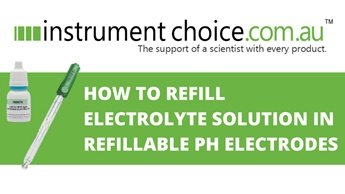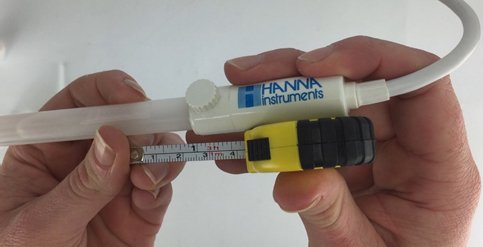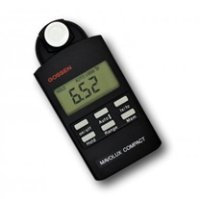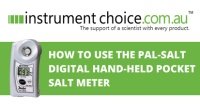How to Refill Electrolyte Solution in Refillable pH Electrodes

It's essential to maintain an adequate electrolyte solution level within your pH electrode for accurate measurements. This guide details seven easy steps to refill the electrolyte in your pH tester.
Figure 1 Watch an Instrument Choice Scientist demonstrate how to refill electrolyte solution in refillable pH electrodes here.
How to Refill Electrolyte Solution in Refillable pH Electrodes
Materials
- pH electrode
- Pipette
- Electrode refilling solution. Check your pH electrode the type required. Contact us if you need help finding the right solution!
Method
Your electrolyte replacement frequency will vary depending on the make, model and pH electrode junction type, your frequency of use and the sample type measured.
The ideal electrolyte level within a pH electrode is 2-3cm from the fill hole. Don't use the electrode when levels are below 3cm from the fill hole.

- Unscrew and remove the electrode fill hole cap.
- Fill the pipette with the electrolyte solution.
- Remove the air gaps from the pipette to ensure a smooth refill, then insert the pipette into the fill hole and expel contents slowly.
- Repeat steps 2-3 until the electrode is refilled with an appropriate amount of electrolyte.
- Once full, remove the pipette. Discard any solution remaining in the pipette.
- Replace the electrode fill hole cap
- Calibrate your pH tester before use
Conclusion
If you have a refillable electrode type, you must ensure there's sufficient electrolyte solution within the electrode. A deficiently filled electrode will produce slow or inaccurate measurements, and you could experience difficulties calibrating your pH tester.
If you need help refilling your pH tester's electrode with electrolyte solution, see the links below or contact an Instrument Choice Scientist!
Additional links
- Watch "How to Refill Electrolyte Solution in Refillable pH Electrodes" again
- Browse Electrolyte Solution at Instrument Choice
- HI7071 Electrolyte Fill Solution, 3.5M KCl + AgCl (30 mL x 4)
- HI7071M Electrolyte Fill Solution, 3.5M KCl + AgCl (230 mL)
- HI7071L Electrolyte Fill Solution, 3.5M KCl + AgCl (500 mL)
- HI7072 Electrolyte Fill Solution, 1M KNO₃ (30 mL x 4)
- HI7072L Electrolyte Fill Solution 1M KNO₃ (500 mL)
- HI7076 Electrolyte Fill Solution, 1M NaCl (30 mL x 4)
- HI7075 Electrolyte Solution 1.7M KNO₃, 0.7M KCl (30 mL x 4)
- Discover pH tester electrodes here
- Check out all pH tester at Instrument Choice
Also interesting
LED lights are replacing other types of lighting as they are more efficient, last longer and save energy (and money).
Light meters, also known as lux meters, are the tools used to measure light. However, Not all light meters are created equal and using a general use light meter to measure LED light will produce erroneous results. To measure LED light accurately, you will need a specific light meter designed for the task.
Read on to discover how to measure LED light

The Atago PAL-SALT is a pocket-sized, digital salt meter designed for checking salt content within food products. It is also suitable for industrial applications, like testing the corrosion resistance of automobiles.
The Atago PAL-SALT is capable of rapidly and accurately measuring salt concentrations from 0.00 to 10.0% (g/100g). Our scientists have collaborated to make a comprehensive video to help new owners become acquainted with their Atago PAL-SALT. The video demonstrates how to perform a zero-setting, take a measurement (using a food sample), prepare a food sample dilution, and set an offset.
Learn how to use the Atago PAL-SALT Digital Hand-held Pocket Salt Meter

